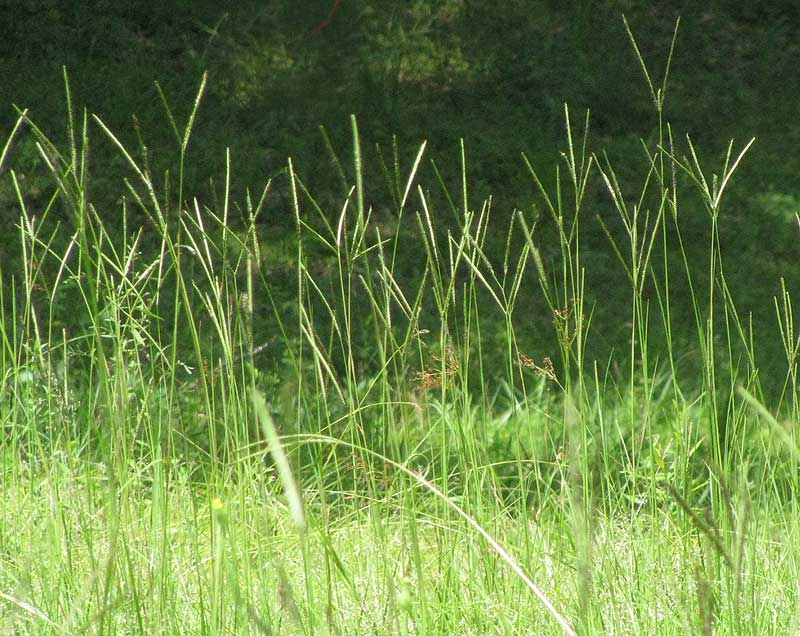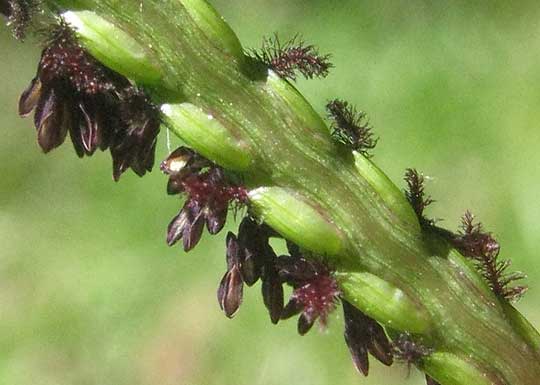Excerpts from Jim Conrad's
Naturalist Newsletter

from the the June 17, 2012 Newsletter issued from the woods of the Loess Hill Region a few miles east of Natchez, Mississippi, USA
LOUISIANA GRASS
Around here in open, grassy areas in dry soil on slopes, atop ridges, along roads, even in pastures where the soil has been compacted or overgrazed, there's a certain super-abundant grass that's especially conspicuous nowadays. That's because it's issuing its flowering heads comprising two or three slender, one-sided, spike-like racemes held aloft on knee-high, slender stems, as shown above.
A close-up showing two rows of spikelets held beneath a curvy, ribbonlike rachis, with purple, pollen-producing anthers dangling from the lower florets, and purple, fuzzy stigmas arising from upper florets, is shown below:

This grass is native here in the US Southeast but it now occurs throughout most of the world's moist tropics and subtropics, either as an invasive or planted as a groundcover because it's such a tough, robustly reproducing species capable of growing on poor soils. Because it occurs in so many countries it goes by a host of names. In the US Southeast it's often called Louisiana Grass. Books may refer to it as Carpet Grass. In Australia it's Durrington Grass, and other names include Mat Grass, Caratao Grass, and Narrowleaf Carpet Grass. It's AXONOPUS FISSIFOLIUS. Despite its abundance here on the Gulf Coastal Plain, it doesn't occur as far north and inland as Kentucky and Tennessee.
Its flower arrangement in chicken-foot-like heads is similar to what's seen for Bermuda-Grass, Crabgrass and Goosegrass. Those chicken-foot-heads can be pretty swaying in an afternoon breeze, and I admire the plant's toughness and vigor, but the heads do serve as wonderful platforms for ticks who also these days are abundant, and climb onto the heads and wait at knee level for bare-legged people like me to walk by.
Three Carpet Grass species -- members of the genus Axonopus -- are found in the US Southeast. Our Axonopus fissifolius is distinguished from them by its small spikelets, only about 1/10th of an inch long (2.5mm) and narrow leaves, mostly about 1/8th inch wide (4mm).